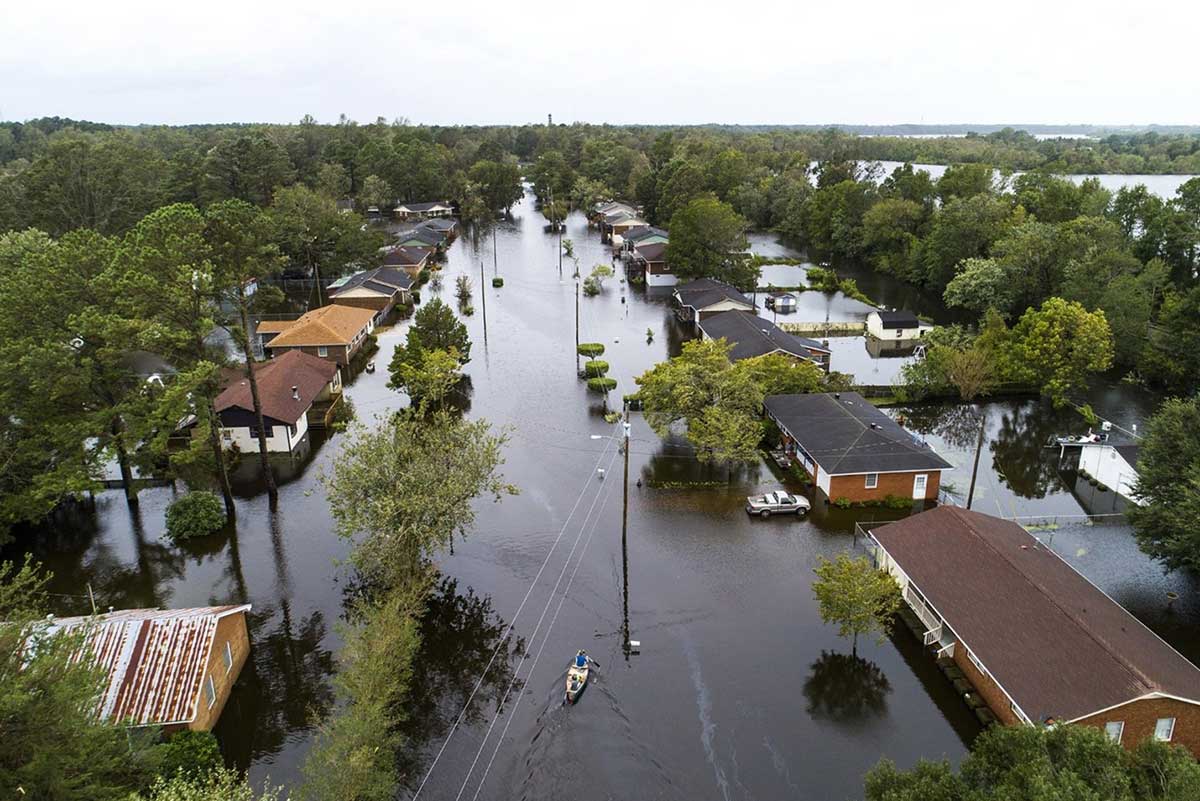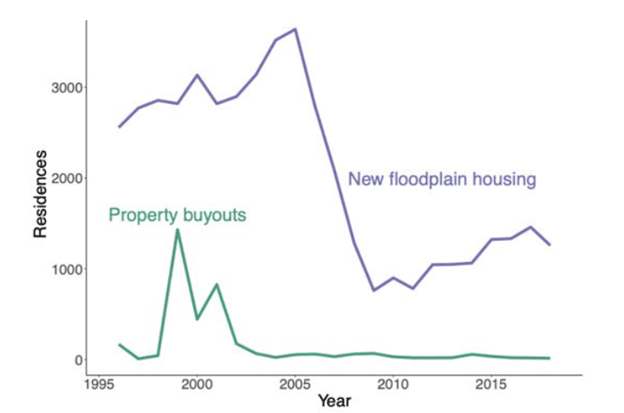By Taylor Fitzgerald
What is the Collaboratory’s Flood Resiliency Project?
Over the past two years, a team of researchers and scientists brought together by the NC Policy Collaboratory have developed a comprehensive study on the ins and outs of flood resiliency in North Carolina. The NC General Assembly (NCGA) sparked this crucial study by providing the Collaboratory with funding of $2 million in September of 2019 which was a part of Senate Bill 429: the “Disaster Recovery Act.”
The project involved several dozen faculty members, graduate students, and undergraduates from UNC-Chapel Hill and NC State University. The faculty lead for the study was Mike Piehler, Director of the UNC Institute for the Environment.
The final Flood Resiliency Study was submitted to the NCGA on June 1, 2021. Found within the report is not just a comprehensive study of flood resiliency in eastern North Carolina, but also a detailed set of recommendations along with an implementation plan. The areas of study within the report include: floodplain buyouts, financial risk, natural systems, infrastructure and public health impacts.

Study Highlight – Floodplain Buyout Research
While there are many components to the Collaboratory study, one specific research project focused on floodplain buyouts. A skilled group of researchers led by UNC-Chapel Hill’s Todd BenDor and David Salvesen spearheaded work on this section of the report. Floodplain buyouts are defined as: “government-led acquisition and removal of flood-prone residential properties.” This practice meant to prevent future flood damage has grown in popularity over the past 30 years within the United States. The appeal of floodplain buyout projects is that they effectively remove homes from dangerous flood prone areas while typically providing the relocated homeowners with a fair-market value of their home at pre-flood prices.
Although these programs do have benefits, they are not without downsides. One major negative aspect of floodplain buyout projects is the complicated intergovernmental framework that they follow which can be time consuming and make outcomes difficult to predict. Most buyouts take anywhere from two to five years and are done as a reactive measure of flood prevention, as funding is generally only provided after a disaster occurs.
One main goal of BenDor and Salvesen’s research is to “estimate the full cost of implementing buyout projects” as, when it comes to buyouts, cost is key for homeowners who are deciding if they should participate in a program. BenDor explains that financial costs are the “driver of the program” and are “in many ways what is allowing people to decide if they are going to stay or go.” For those living within flood hazard areas, the decision to participate in a buyout program impacts whether they will stay and face the risks of flooding, or choose to leave their communities behind.

An overall goal of this study is to make data accessible to support impactful policy initiatives. BenDor explains that the study is “trying to liberate data” and explore how “to make data most available” for decision making entities. Additionally, BenDor states that, “data is fundamental to changing anything” as currently, “policymakers are basically flying blind.” Overall, this portion of the Flood Resiliency Study has helped to highlight:
- Funding mechanisms for buyouts by federal, state, and local government;
- The complete cost of floodplain buyouts, focusing on associated transaction costs;
- How private sector involvement can reduce costs and improve the efficiency of buyout implementation; and
- How improved flood mitigation from NC buyout projects have been negatively impacted by new development in floodplains.
Looking Forward
One main value of the Flood Resiliency Study is the diverse group of people brought together by the Collaboratory to research this pressing topic, while also emphasizing the thoughts and needs of community members by speaking to them directly. Michelle Lovejoy, a Landscape Resilience Manager at Environmental Defense Fund who worked on the report’s natural infrastructure study, gave some insight on the importance of the study as a whole.
Lovejoy stated that one main value of conducting the Flood Resiliency Study through the Collaboratory is being able to “bring together a diverse set of academia, nonprofits, and get a lot of different perspectives on how to analyze and look at the same big issue.”
“When you get that many diverse viewpoints in the room together to work through a study, you can get a well-rounded picture of what’s going on in the watershed, where the technology gaps may be to do any type of flood resilience work.”
–Michelle Lovejoy
Additionally, Lovejoy states that another value of the report, especially to the natural infrastructure study, is the “emphasis on talking to a local community” explaining that “as early as you can get local communities involved, the better results will be because they’ll raise things that we didn’t even think of.” The diversity of backgrounds and attention given to community members is not always prioritized, and including these important aspects sets the Flood Resiliency Study apart from others.
Overall, it is evident that the Collaboratory’s Flood Resiliency Study has paved the road for future discussions to continue on this crucial topic for the safety of North Carolina residents. The latest version of the state budget under consideration contains millions of dollars in funding for resiliency and flood mitigation programs across the state. The Collaboratory study helped inform those policy and budgetary decisions and the expectation is that future research on the topic will continue to provide value to the state.
Learn more about the Collaboratory Flood Resiliency Study.
Taylor Fitzgerald is a second-year graduate student completing a dual degree in Environment and Science Communication with a concentration in Strategic Communication.
